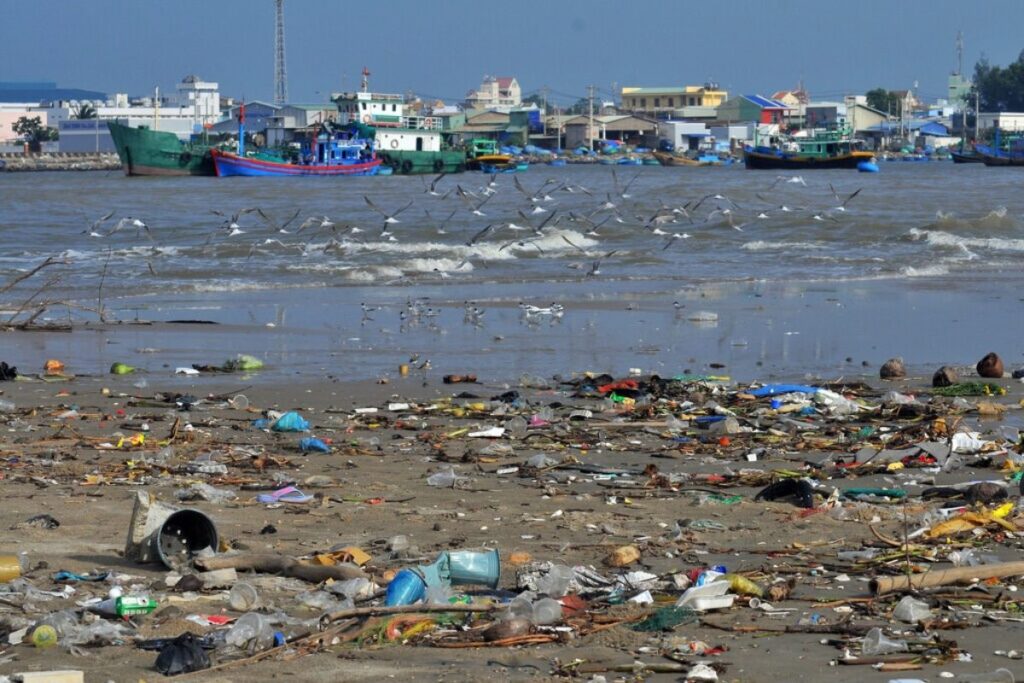Air and water pollution are two of the most critical environmental issues affecting ecosystems, human health, and the climate. These types of pollution occur due to both natural and human-made sources and have far-reaching consequences for life on Earth.
Air Pollution

Air pollution is the presence of harmful substances in the air that can negatively affect human health, ecosystems, and the climate. These pollutants can come from various sources, including industrial processes, transportation, agriculture, and natural events like wildfires and volcanic eruptions.
Types of Air Pollutants:
- Particulate Matter (PM):
- Tiny particles suspended in the air. PM10 and PM2.5 (particles smaller than 10 and 2.5 micrometers, respectively) are especially harmful as they can penetrate deep into the lungs and bloodstream.
- Sources: Vehicle emissions, industrial processes, burning of fossil fuels, and wildfires.
- Nitrogen Oxides (NOx):
- Gases produced by vehicles, power plants, and industrial activities. NOx contributes to smog and acid rain formation.
- Sulfur Dioxide (SO2):
- A gas produced by burning coal and oil. SO2 contributes to acid rain and respiratory problems.
- Carbon Monoxide (CO):
- A colorless, odorless gas primarily produced by vehicles and industrial processes. It can cause poisoning when inhaled in large quantities.
- Ozone (O3):
- A secondary pollutant formed when nitrogen oxides and volatile organic compounds (VOCs) react in the presence of sunlight. Ground-level ozone is a significant component of smog and can cause respiratory issues.
- Volatile Organic Compounds (VOCs):
- Chemicals that evaporate easily into the air. VOCs are emitted by products such as paints, solvents, and fuels. They contribute to the formation of ozone and smog.
Effects of Air Pollution:
- Human Health: Respiratory diseases (asthma, bronchitis), heart disease, lung cancer, and premature death.
- Environmental Impact: Damages crops, forests, and aquatic ecosystems; acid rain harms plants and water quality; ground-level ozone can stunt plant growth.
- Climate Change: Greenhouse gases like carbon dioxide (CO2) and methane (CH4) contribute to global warming.
Solutions to Air Pollution:
- Transitioning to renewable energy (solar, wind, hydropower).
- Implementing stricter emissions regulations for industries and vehicles.
- Promoting the use of public transportation and electric vehicles.
- Planting trees and maintaining green spaces.
- Using cleaner technologies and energy-efficient processes.
Water Pollution

Water pollution occurs when harmful substances contaminate water bodies such as rivers, lakes, oceans, and groundwater. This can lead to water that is unsafe for consumption, recreational use, and the health of aquatic ecosystems.
Types of Water Pollutants:
- Chemical Pollutants:
- Heavy Metals (Lead, Mercury, Arsenic): Often come from industrial discharge, mining, and agriculture. They accumulate in aquatic life and can be toxic to humans and animals.
- Pesticides and Fertilizers: Runoff from agricultural lands contains chemicals like nitrates and phosphates, leading to nutrient pollution and harmful algal blooms.
- Oil Spills: Accidental oil leaks or spills from ships, pipelines, or industrial facilities can cause massive environmental damage, coating marine life and harming ecosystems.
- Pathogens:
- Microorganisms (bacteria, viruses, and parasites) from sewage and wastewater contamination can cause diseases like cholera, dysentery, and typhoid fever.
- Plastic and Solid Waste:
- Plastics, especially single-use plastic items like bottles, bags, and packaging, often end up in oceans and rivers, leading to entanglement of marine animals and pollution of aquatic habitats.
- Nutrient Pollution (Eutrophication):
- Excessive nutrients (mainly nitrogen and phosphorus from fertilizers) promote the overgrowth of algae in water bodies, leading to oxygen depletion (hypoxia), which can kill fish and disrupt ecosystems.
- Thermal Pollution:
- Warm water discharged from industrial processes or power plants can raise the temperature of water bodies, disrupting aquatic life, particularly fish that need cool waters to survive.
Effects of Water Pollution:
- Human Health: Contaminated drinking water can cause waterborne diseases, such as cholera, dysentery, and gastrointestinal issues. Long-term exposure to chemical pollutants can lead to cancer and neurological disorders.
- Marine Life: Oil spills, heavy metals, and plastic debris can be fatal to marine organisms, disrupting food chains.
- Ecosystem Damage: Eutrophication from nutrient pollution leads to algal blooms that deplete oxygen in the water, suffocating aquatic life.
Solutions to Water Pollution:
- Wastewater Treatment: Improved treatment processes can help remove pollutants from wastewater before it is discharged into water bodies.
- Proper Waste Disposal: Ensuring that waste, including plastics and chemicals, is properly disposed of to prevent it from reaching water sources.
- Sustainable Agriculture: Reducing the use of chemical fertilizers and pesticides and promoting organic farming practices.
- Clean-up Initiatives: Programs to clean up oil spills, plastics, and other pollutants from rivers and oceans.
- Erosion Control: Implementing practices to prevent soil erosion, which can lead to sediment pollution in water bodies.
- Public Awareness: Educating people about the importance of water conservation and reducing water pollution through proper waste management.
Combined Effects of Air and Water Pollution:
Air and water pollution are often linked, as pollutants in the air can eventually settle in water bodies, and waterborne pollutants can affect air quality when evaporated or carried by winds. For example:
- Acid Rain: Pollutants like sulfur dioxide and nitrogen oxides can combine with water vapor in the atmosphere to form acid rain, which harms aquatic ecosystems and terrestrial vegetation.
- Harmful Algal Blooms: Excess nutrients from agricultural runoff into water can promote algal blooms, which release toxins into the air and water, affecting both human health and the environment.
Conclusion
Both air and water pollution are major global issues that require comprehensive and coordinated efforts to tackle. These pollutants can harm human health, wildlife, ecosystems, and contribute to climate change. Solutions range from stricter regulations and technological innovations to increased public awareness and behavior changes. By addressing both air and water pollution, we can create a healthier planet for future generations.

Leave a Reply